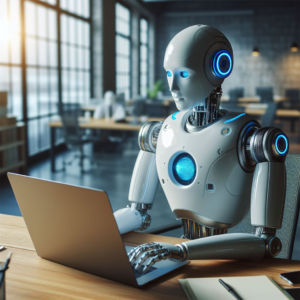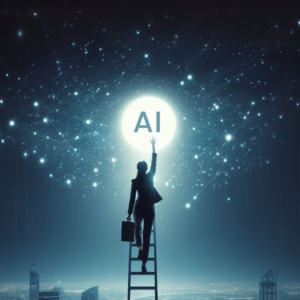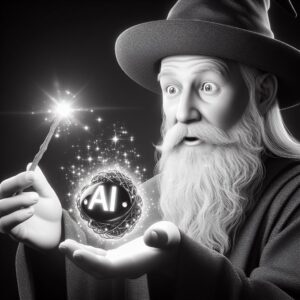The field of conversational technology has witnessed significant progress in recent years, giving rise to two prominent solutions: traditional chatbots and AI-powered speech engines. While both aim to facilitate human-computer interactions, distinct differences set them apart. In this blog post, we will delve into these disparities and explore the reasons why AI-powered speech engines have emerged as the superior solution, revolutionizing the way we engage with technology.

I. Understanding Traditional Chatbots:
Traditional chatbots, known as rule-based or scripted chatbots, operate on pre-defined sets of rules and responses. These chatbots employ decision trees or if-else statements to guide conversations, relying on specific keywords or patterns to trigger predefined responses. Primarily text-based, traditional chatbots lack the ability to effectively comprehend natural language and context.
II. Introducing AI-Powered Speech Engines:
AI-powered speech engines leverage advanced technologies such as natural language processing (NLP) and machine learning to offer a sophisticated and intuitive conversational experience. These engines are designed to understand and interpret spoken language, enabling users to interact with technology through voice commands and speech. By employing large language models and neural networks, these speech engines comprehend context, intent, and even emotions, resulting in more human-like and dynamic conversations.
III. Key Distinctions between Traditional Chatbots and AI-Powered Speech Engines:
- Natural Language Understanding (NLU): Traditional chatbots rely heavily on keyword matching and pattern recognition, while AI-powered speech engines employ advanced NLP algorithms to understand user intent, context, and sentiment. This enables more accurate and contextually appropriate responses, significantly enhancing the overall user experience.
- Contextual Comprehension: New AI-speech engines excel in capturing the nuances of a conversation, recognizing context shifts, and maintaining contextual continuity throughout dialogues. They possess the ability to recall previous interactions, enabling more engaging and coherent conversations compared to traditional chatbots, which often struggle to sustain context over extended exchanges.
- Flexibility and Adaptability: Traditional chatbots are rigid, operating within predefined scripts and responses. In contrast, AI-powered speech engines continually learn from user interactions, adapting their responses accordingly. Leveraging machine learning techniques and vast amounts of data, these engines enhance their performance over time, offering dynamic and evolving conversational experiences.
IV. The Supremacy of AI-Speech Engines:
- Enhanced User Experience: The advanced capabilities of AI-powered speech engines deliver a natural and intuitive interaction for users, elevating the overall experience. By understanding context, recognizing speech patterns, and responding intelligently, these engines provide a seamless and personalized encounter, fostering heightened user satisfaction.
- Improved Efficiency and Accuracy: AI-powered speech engines expedite communication by processing information faster and with greater precision. Their capacity to comprehend natural language enables users to effortlessly express complex queries and commands, resulting in prompt and accurate responses.
- Scalability and Integration: AI-powered speech engines exhibit remarkable scalability and adaptability, accommodating diverse conversational scenarios across various platforms and industries. Seamlessly integrating with other AI technologies and systems, these engines empower businesses to deliver exceptional customer experiences through multiple channels.
Conclusion:
In the ever-evolving landscape of conversational technology, AI-powered speech engines have definitively surpassed the limitations of traditional chatbots, establishing their dominance as the superior solution. With their advanced natural language understanding, contextual comprehension, and adaptive learning capabilities, AI-powered speech engines have transformed the way we engage with technology, offering a revolutionary conversational experience.
By leveraging sophisticated technologies like natural language processing (NLP) and machine learning, AI-powered speech engines have achieved remarkable milestones in understanding and interpreting spoken language. They have elevated user experiences to new heights by comprehending user intent, context, and even emotions. This enhanced understanding enables these engines to provide highly accurate, contextually appropriate, and personalized responses, thereby fostering greater user satisfaction.
AI-powered speech engines have revolutionized conversational technology, unlocking a new era of intelligent and intuitive interactions. Their advanced capabilities in natural language understanding, contextual comprehension, adaptability, and scalability have surpassed traditional chatbots in every aspect. As technology continues to advance, the power of AI will continue to reshape the future of conversational interfaces, bridging the gap between humans and machines and unleashing endless possibilities for innovation and transformation.
Does your business need help finding the right tools for you? Let Epimax do the heavy lifing!














